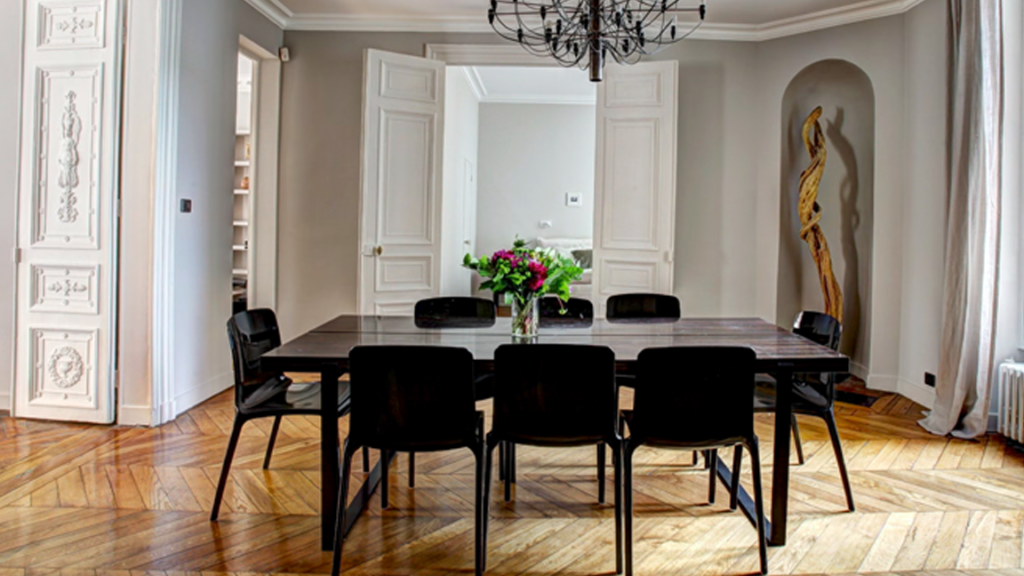
As many of my readers know, I’m a big enthusiast when it comes to Victorian-era homes. As a color specialist who chooses colors for everything from Victorian to Mid-Century Modern homes, it’s hard to beat what a Victorian home offers regarding architectural detail. From the rich and storied color palettes to the ornate design elements to the craftsmanship and history of architecture, Victorians are just miracles to behold, as far as I’m concerned.
While you won’t find as many Victorians on the west coast as you will on the east coast, they are still scattered throughout the United States, each with its own story to share. Some homeowners purposely opt for a 19th-century Victorian over a modern luxury home because of its character, timeless craftsmanship, and endless potential. If you require a refresher course or introduction to Victorian-Era homes, please see my blog, “Exterior Historic Paint Colors to Honor Your Victorian Home.”
You may have heard the term “modern Victorian interior design” recently, and if you find it somewhat confusing, don’t worry, you’re not the only one. The term is relatively new; it may seem like an oxymoron to some. How do Victorian interiors become modern? Let’s explore this design concept.
For me, modern victorian interior design is defined by a strong juxtaposition between Victorian-era design and modern design/amenities. What makes this juxtaposition so sharp and visually striking is that the two opposing time periods and design elements will be placed alongside each other.
For example, you may have a chandelier from 1905 mounted on the ceiling in full operation, with a grey cement floor underneath. You might have beautifully ornate woodwork and a 65’’ flatscreen on a nearby wall. You may have ornate banisters on the stairs with intricate wood carvings, but modern track lighting illuminates those stairs. You could have kitchen cabinetry from the late 1800s with contemporary appliances looking sleek and elegant on the countertop. There is an INTENTIONAL design juxtaposition with modern victorian interior design, and when it’s done right, the visual balance between the two periods is memorable and striking.
While not every homeowner will be able to create dramatic examples of modern victorian interior design in their home (especially if they don’t live in a Victorian!), there are ways to emulate the same juxtaposition at the heart of the concept. Remember, it’s about creating the international juxtaposition between the two periods. Even if you live in a home built in the 1950s, 60s, or 70s, there’s still potential to create design contrasts between design periods – this strategy can go beyond Victorians!
Using technology to generate this contrast is an easy way to start incorporating it throughout your interior design. As cited before, a Victorian with smart home features, modern lighting, and entertainment centers is a clear example, but you can start smaller. Let’s pretend you live in a minimalist 600 sqft apartment building in the city, and it’s all new construction. You could add some impactful contrasts by getting a vintage clock radio or turntable and speakers and make them a statement piece in your entertainment era. Mixing generational design elements adds character to the space that may need it.
Victorian-era homes can be a tad bit dark sometimes. Adding modern furniture with neutral/lighter color palettes, or even glass to add a more contemporary vibe, can be an effective way to update the space and bring some levity to a heavy interior.
Lighting is an extremely effective way to create contrast between time periods. Picture a Victorian interior with an updated cooler color palette in the formal dining room, but instead of the overhead lighting being a Victorian-era chandelier, it’s a modern chandelier with brushed metals, black paints, and funky Edison bulbs.
A great way to add the “older-home feeling” into a newer space is to mount decorative molding to the walls! Adding wainscoting and dividing your walls into upper and lower areas creates the opportunity to add two wall colors to the same room. Another option is to add molding, creating rectangles on the walls. Adding detail this way gives you a chance to accent the molding with a trim color or simply apply a different paint finish, like a wall painted in a flat finish, with the molding that you added in a satin finish so that it stands out just enough. Don’t be afraid to add moldings in different shapes and sizes; this is where you can be as creative as you want, try different looks for different rooms, and add that personal flair!
Whether you live in or own a Victorian home or not, my goal with this article is to show you that by contrasting interior design elements from different periods, you create something memorable, dynamic, and eye-catching!
Friends of mine in the Boston area, Catchlight Painting in Newton, MA, are highly experienced exterior/interior painting contractors who have been working with Victorians for decades! If you’d like to learn more about historic home restoration and victorian house painting strategies, click the links to read their insights!